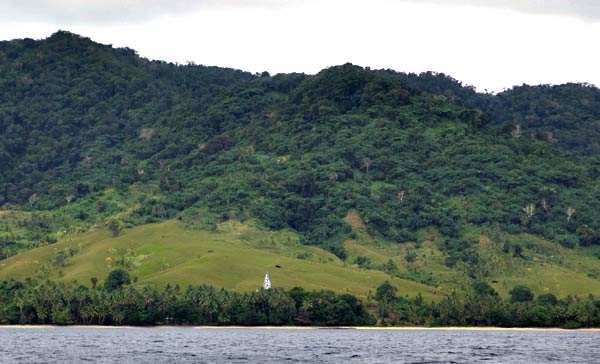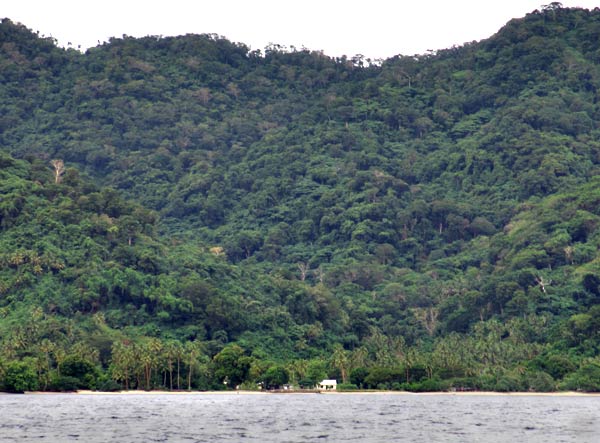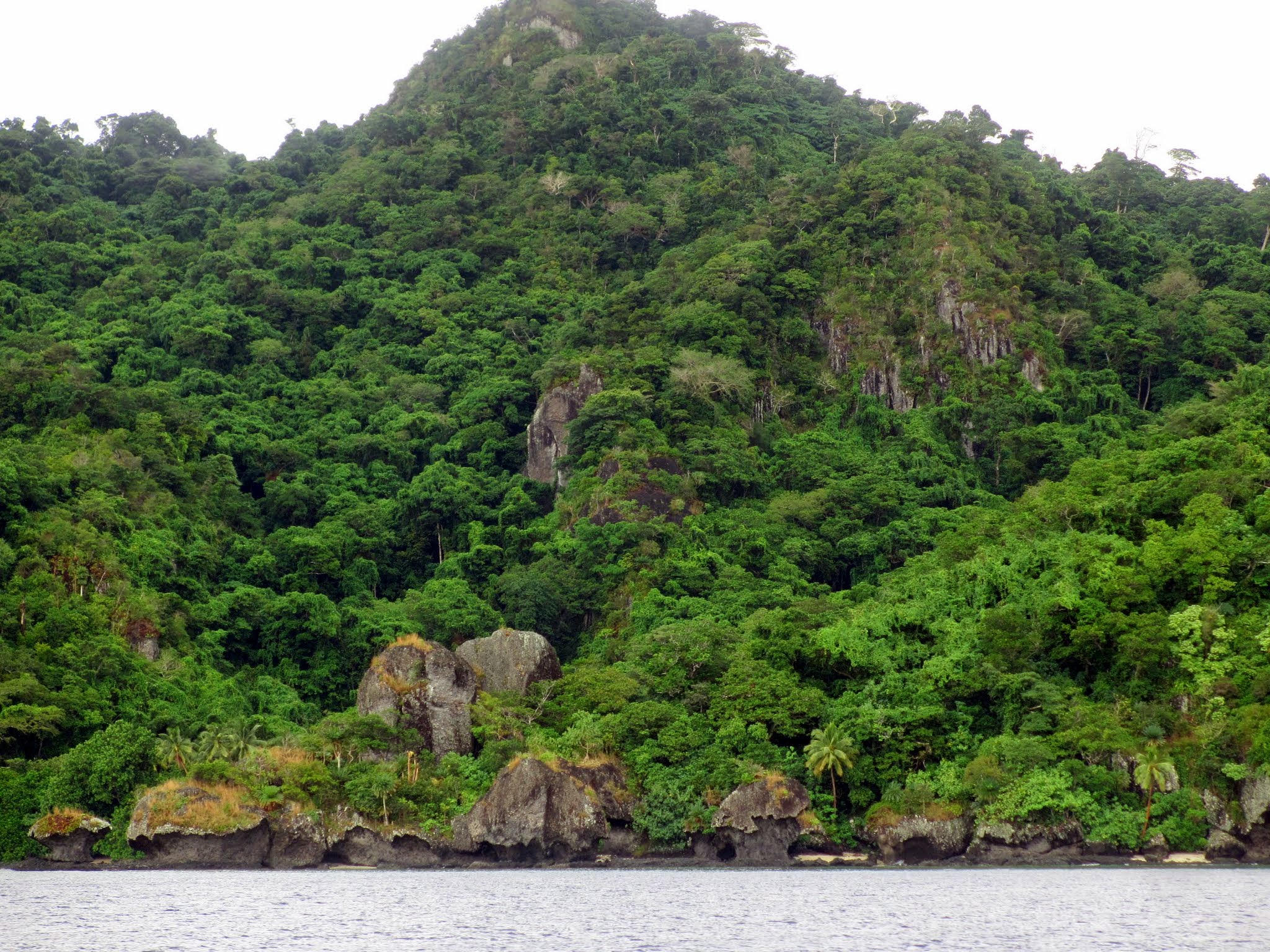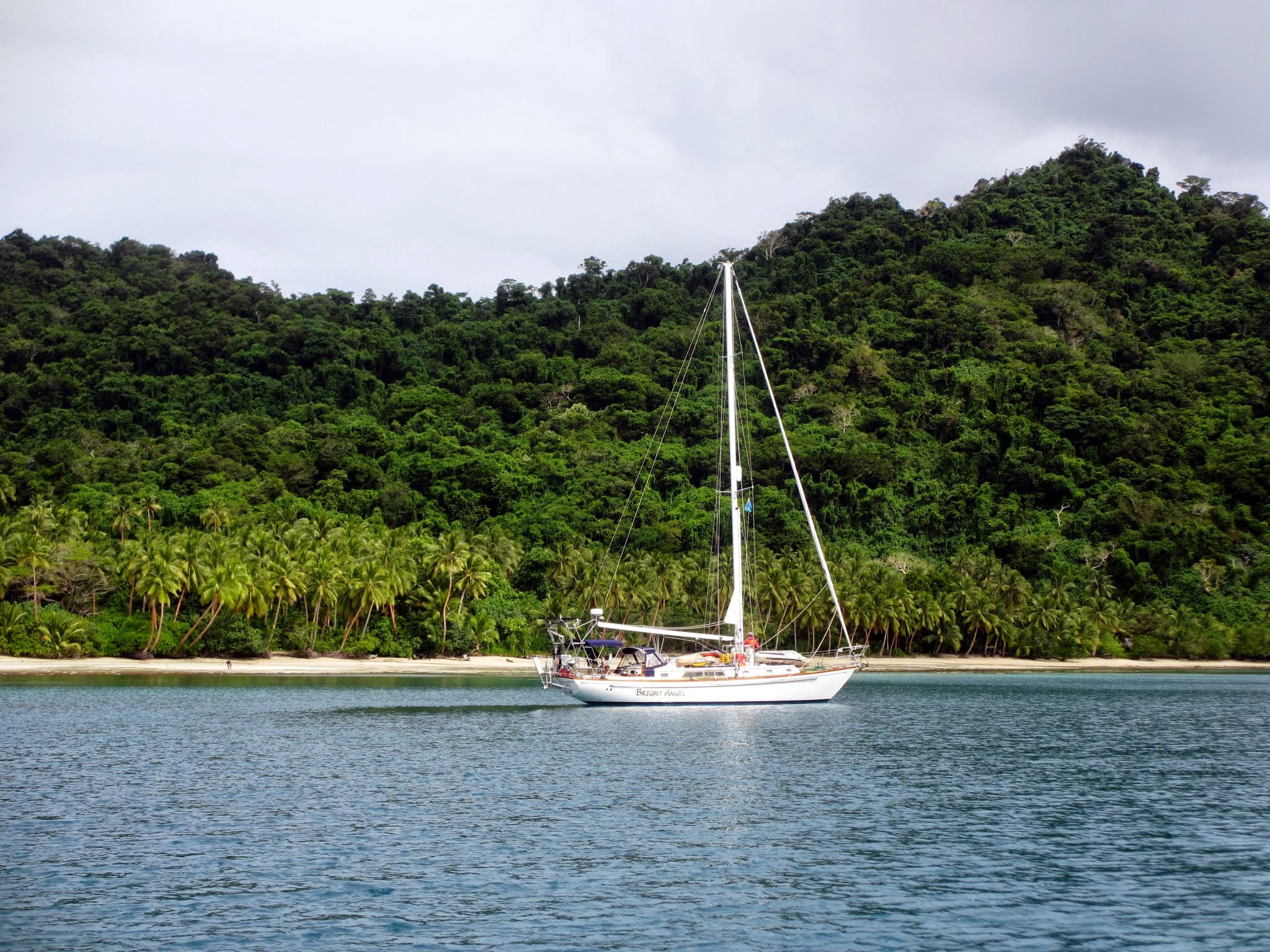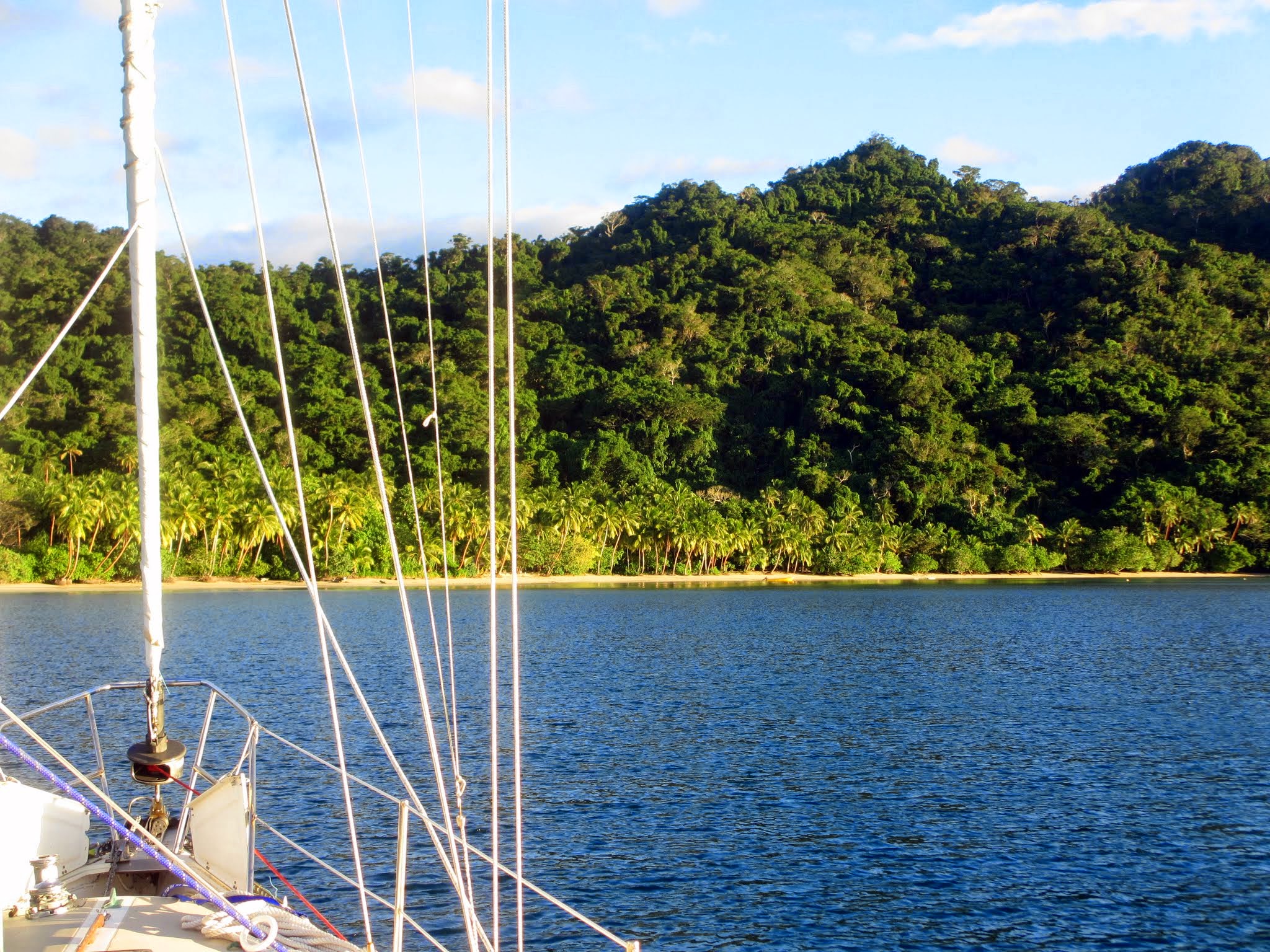July 26, 2013
Rabi Island is another island whose population comes from another place. They originally lived on Banaba in Kiribati, and in the 1900s various countries mined it for phosphate, to the point where it pretty much became a moonscape. The British government thus bought Fiji’s Rabi Island for the Banabans and resettled them there. It wasn’t an easy transition; but the Banabans persevered and today, like the Tuvaluans on Kioa, they retain their own culture. Even though they’re officially part of Fiji, they consider Rabi their own country. This later turned out to be an issue for a few cruisers (more on this later).
Below are some photos of the north shore of Rabi as we motored past.
Today we had very cloudy skies, which meant we’d have to rely on our waypoints to get into Albert Cove. We’d much prefer good visibility, but what can you do? As we approached the bay, it didn’t look that impressive under these gray skies. But as we made our way in through the pass, we began to see its magnificence! The bay was rimmed with mountains where huge rock formations jutted out through the jungle growth, giving it a very exotic and dramatic look. At the head of the bay was a long stretch of palm-tree lined beach. This bay definitely lived up to its reputation!
It looked big, but there were a lot of reefs here and only a few spots to anchor. We found a good spot and knew our friends on Bright Angel, who we were meeting here, would find one, too. It wasn’t long before they arrived and found a nifty spot closer to the beach.
Below, a gallery of pictures from our arrival at Albert Cove (click to enlarge and scroll).
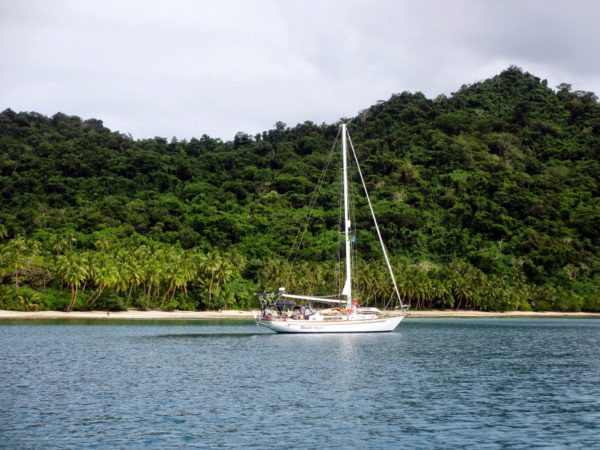
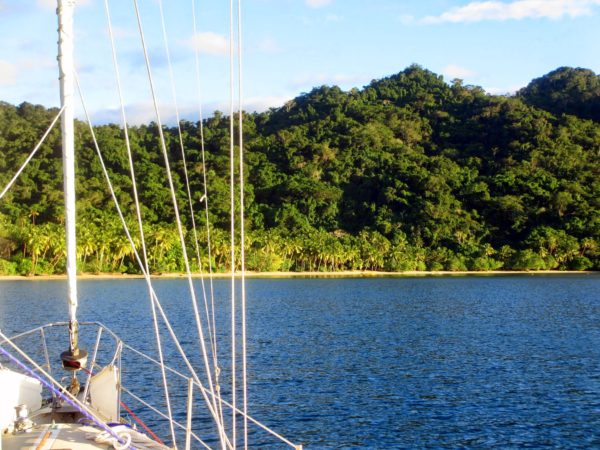
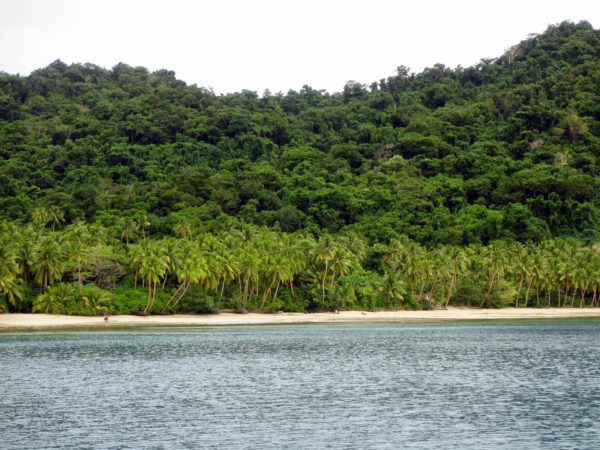
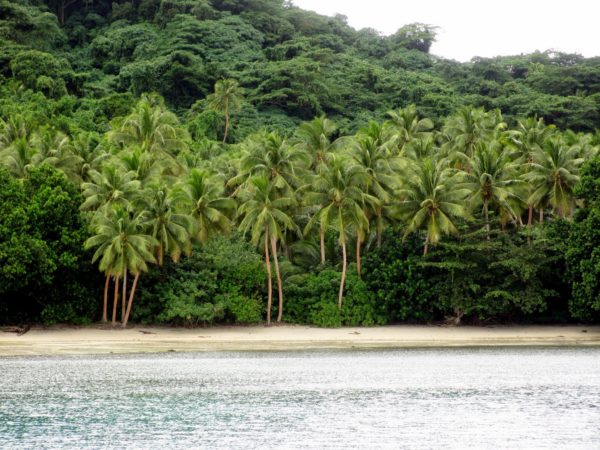
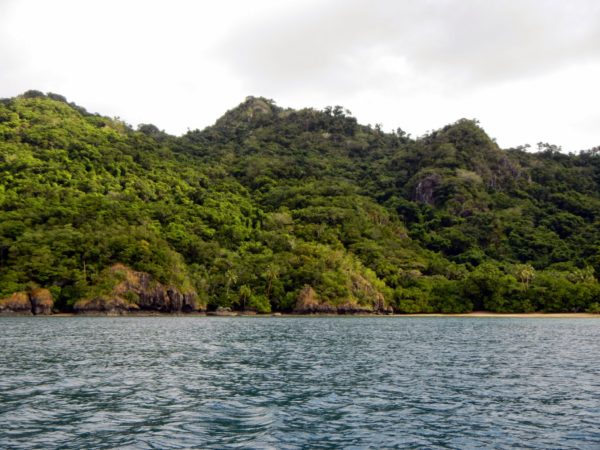
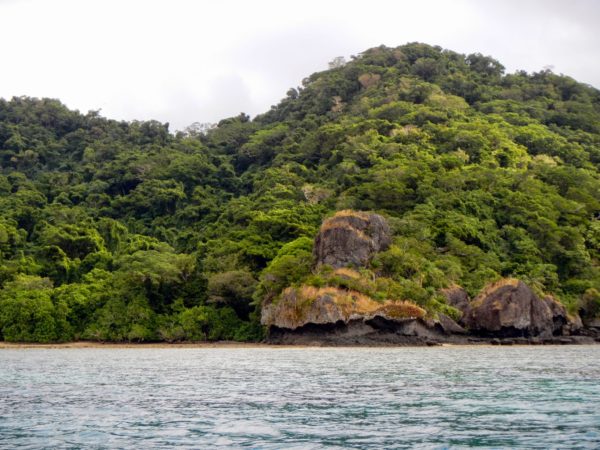
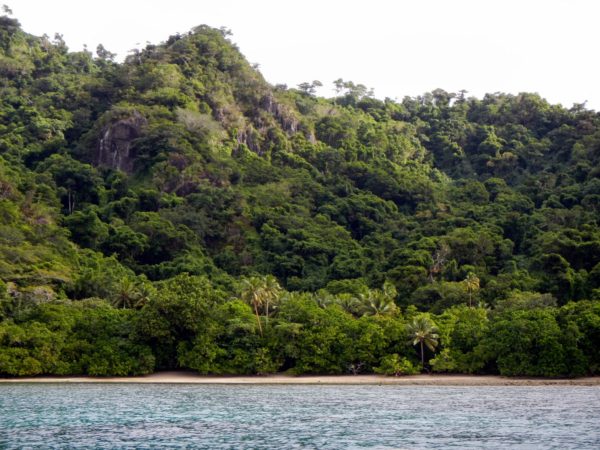
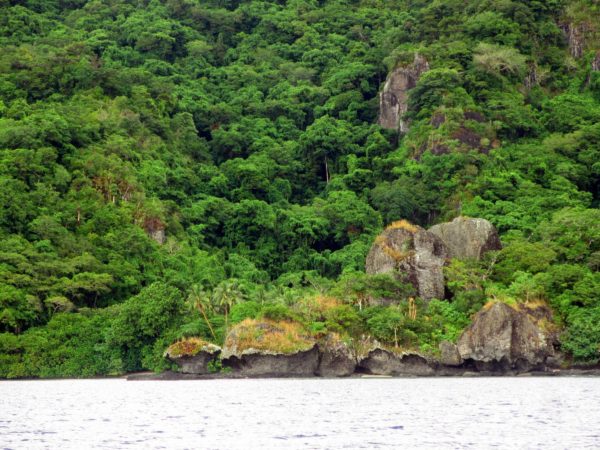
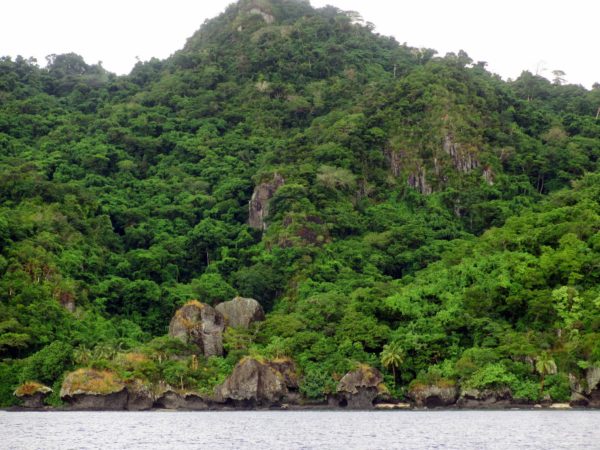
In the evening as we enjoyed sundowners on Bright Angel, the sun came out again, making that wonderful golden light against a dark gray sky that makes everything green seem to glow.
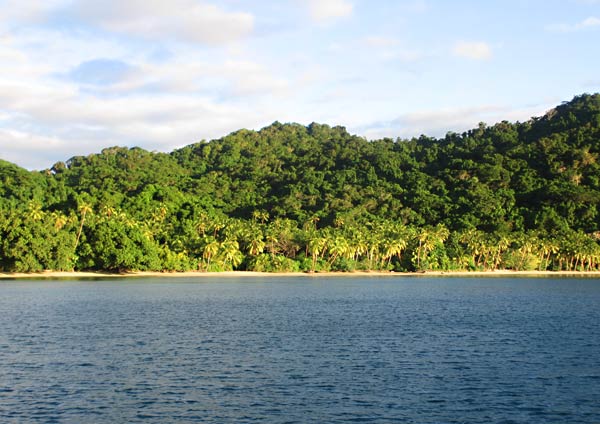
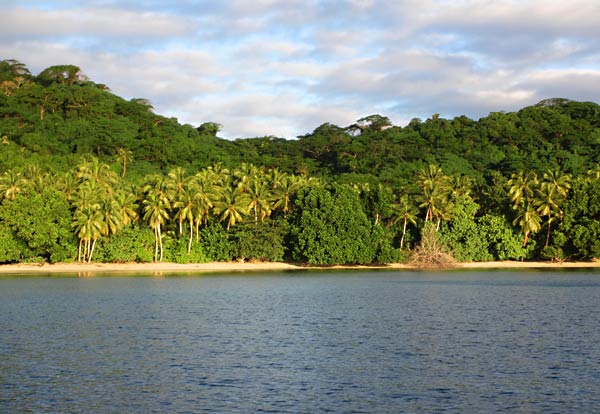
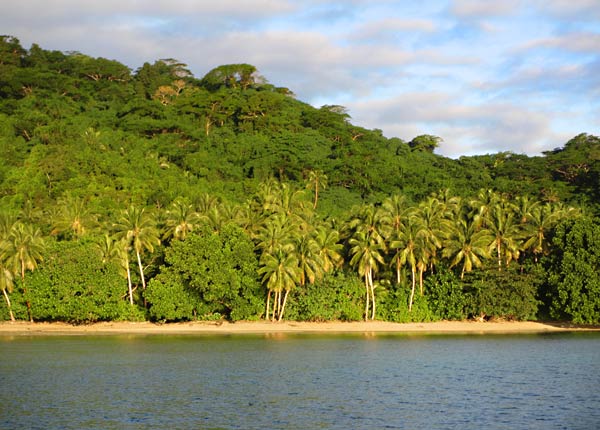
Albert Cove was truly a beautiful bay, and we looked forward to spending a few days here. –Cyndi


